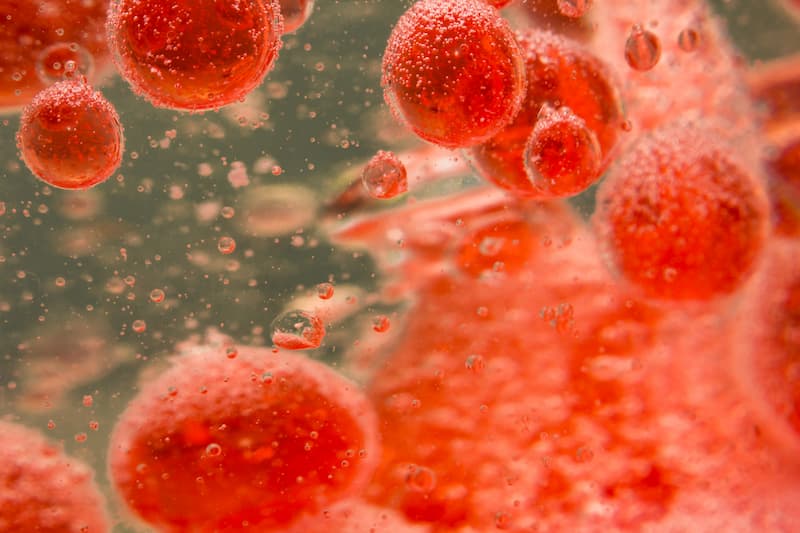Rusfertide May Help Control Erythrocytosis in Polycythemia Vera
Treatment with rusfertide may reduce the use of phlebotomy and limit debilitating disease-related symptoms in patients with polycythemia vera based on findings from the phase 2 REVIVE trial.
“Rusfertide appears to represent a step forward in the treatment of polycythemia vera, with a novel mechanism of action that could become an additional therapeutic tool for the control of this disease,” according to the study authors.

Rusfertide conferred benefits, which included controlling erythrocytosis and maintaining a hematocrit of less than 45%, among patients with polycythemia vera, according to findings from the phase 2 REVIVE trial (NCT04057040) published in The New England Journal of Medicine.
In part 1 of the trial, the estimated mean phlebotomy rate was 8.7 ± 2.9 prior to treatment with rusfertide and 0.6 ± 1.0 from baseline to week 29 of treatment. From weeks 17 to 29, a response was highlighted in 83% (n = 58/70). Additionally, investigators reported that mean phlebotomy rates in part 1 were low regardless of disease risk category or receipt of concurrent therapy. The mean maximum hematocrit decreased from 50.0% ± 5.8% before the first dose of rusfertide to 44.5% ± 2.2% during part 1.
In part 2 of the trial, 60% of patients who received rusfertide had a response compared with 17% of those who received placebo (P = .002). Additionally, 10% (n = 3/30) of patients in the rusfertide group and 52% (n = 15/29) of those in the placebo group met the criteria for phlebotomy, with 93% (n = 28/30), and 48% (n = 14/29) ultimately not undergoing phlebotomy in part 2. Additionally, the mean absolute change from baseline in the hematocrit was 0.3% ± 3.1% with rusfertide vs 2.0% ± 2.6% with placebo.
The median time to loss of response, eligibility for phlebotomy, and a first hematocrit of 45% or higher were not reached in patients who received rusfertide in part 2. The median time to loss of response was 4.4 weeks, and the median time to phlebotomy eligibility and first minimum hematocrit of 45% was 8.1 weeks for patients who received placebo.
“Rusfertide appears to represent a step forward in the treatment of polycythemia vera, with a novel mechanism of action that could become an additional therapeutic tool for the control of this disease,” the study authors wrote. “Rusfertide is a potentially effective treatment option for achieving and sustaining hematocrit control in patients with polycythemia vera, reducing the use of phlebotomy and the occurrence of debilitating disease-related symptoms.”
In part 1 of the ongoing, international REVIVE trial, investigators determined an optimal dose for subcutaneous rusfertide, which was administered from 10 mg to 120 mg in combination with phlebotomy alone or cytoreductive therapy plus supplemental phlebotomy to 70 patients. In part 2 of the trial, patients were randomly assigned 1:1 to receive rusfertide (n = 30) or placebo (n = 29) from weeks 29 to 41.
The trial’s primary end point is the incidence of responses in part 2, which investigators defined as patients having hematocrit control, not undergoing phlebotomy, and completing the 12-week treatment regimen. Secondary end points in part 2 include the change in the hematocrit from baseline to week 41 of treatment.
Patients 18 years and older who met the revised 2016 World Health Organization criteria for polycythemia vera and had phlebotomy-dependent disease were able to enroll on the trial. In the rusfertide and placebo arms of part 2, respectively, most patients were male (80% vs 62%), White (93% vs 86%), and had high-risk disease overall (43% vs 62%).
Concerning patient-reported outcomes, the mean total symptom score based on responses to the modified Myeloproliferative Neoplasm Symptom Assessment Form (MPN-SAF) patient diary was 15.6 ± 15.3 at baseline. In part 1, rusfertide reduced the severity of disease-related symptoms such as fatigue, early satiety, night sweats, concentration problems, inactivity, and itching.
Any-grade and grade 3 adverse effects (AEs), respectively, affected 99% and 10% of patients in part 1 and 100% and 13% of patients overall. In the rusfertide and placebo arms, respectively, common any-grade AEs included injection-site reactions (43% vs 10%), pruritus (7% vs 10%), and myalgia (7% vs 3%).
A second malignancy of stage 1 skin cancer was reported in 7% (n = 5) of patients after beginning treatment with rusfertide. Risk factors for the second malignancy in 4 patients included prior exposure to hydroxyurea or ruxolitinib (Jakafi). Investigators noted that none of these malignant events could be attributed to study treatment.
Reference
Kremyanskaya M, Kuykendall AT, Pemmaraju N, et al. Rusfertide, a hepcidin mimetic, for control of erythrocytosis in polycythemia vera. N Engl J Med. 2024;390(8):723-735. doi:10.1056/NEJMoa2308809